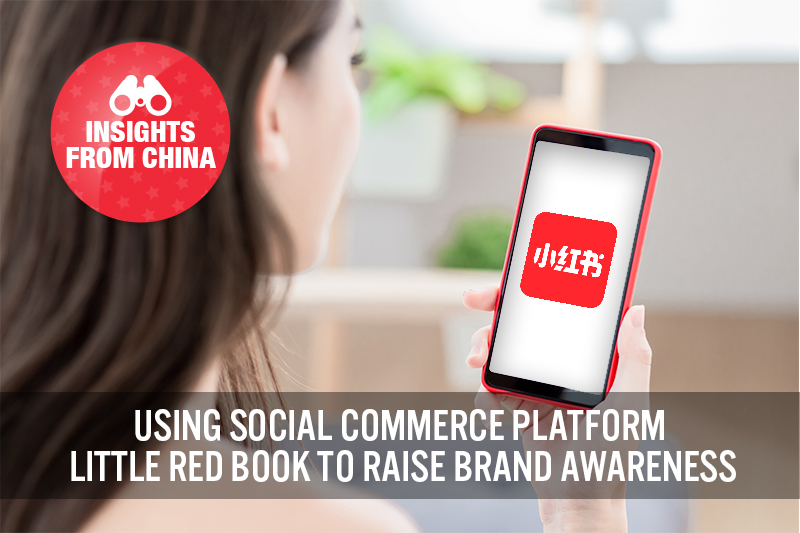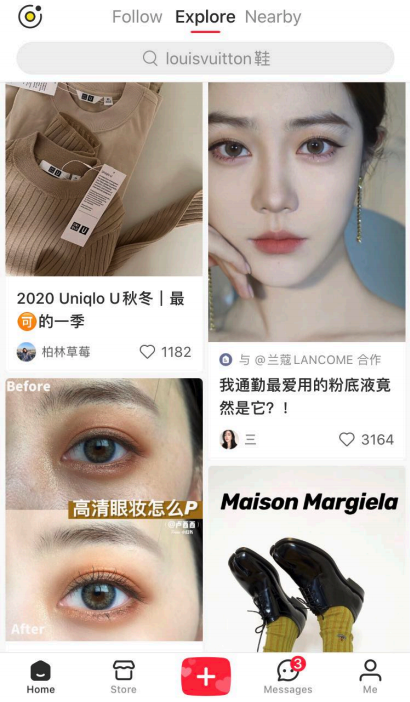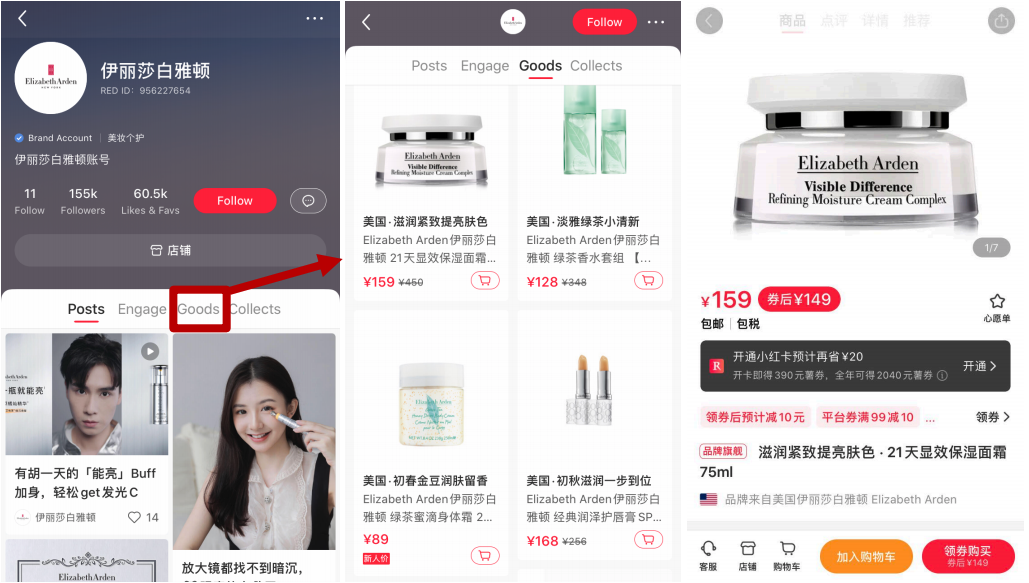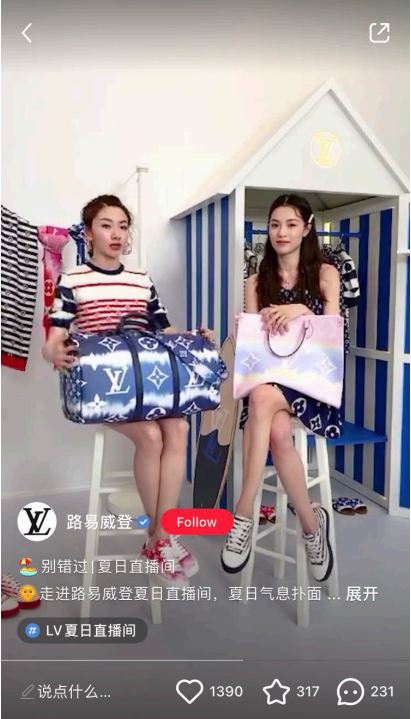
Nitheesh NH
The Growing Popularity and Influence of Little Red Book
Launched in 2013, Little Red Book (or “Xiaohongshu” in Chinese) was a social site on which Chinese tourists could share their experiences of discovering and buying products from overseas. The platform has steadily gained momentum by creating a community of users who are passionate consumers that provide trusted reviews on products, particularly in the fashion and beauty categories. Today, Little Red Book has evolved into a social lifestyle platform that blends user-generated content and e-commerce—often described as a combination of Instagram and Pinterest. In addition to fashion and beauty products, more users are sharing content about travel, fitness, home products and restaurant dining experiences. Little Red Book is one of the most popular platforms among Chinese female consumers, which comprise 77.4% of total users as of March 2020, according to Chinese research firm iResearch. The majority of users on the platform are “post-90s” (i.e., those born in or after 1990, so are aged 30 or younger) and most reside in urban cities. Young, female consumers are becoming the driving force of consumption and are typically highly tech-savvy and active on social media. [caption id="attachment_117990" align="aligncenter" width="700"] Note: Percentages may not sum to 100 due to rounding<br*“MAUs” stands for monthly active users
Note: Percentages may not sum to 100 due to rounding<br*“MAUs” stands for monthly active users**“New Tier 1” comprises 15 cities based on five criteria—availability of commercial resources, connectivity, livability, lifestyle diversity and future growth potential—as defined by Chinese news source Yicai Global
Source: Little Red Book/iResearch[/caption] According to Little Red Book, the platform typically generates over 8 billion daily views. The highly visual layout and design of the posts make the platform particularly suitable for beauty and fashion brands to showcase their products, whether in pictures or short videos. In the first half of 2020, the number of posts related to beauty categories on the platform surged by 108% year over year, according to Little Red Book. The platform is also highly interactive and engaging. In addition to creating their own posts, users can also “save” a post, interact with other users or brands through “likes” and “comments” on a post, or subscribe to accounts. The homepage of each user is customized, powered by a recommendation algorithm based on users’ browsing and searching history. The “nearby” tab shows tailored content such as nearby restaurants, sightseeing spots, shopping places and more depending on each user’s location. [caption id="attachment_117991" align="aligncenter" width="300"]
 Customized homepage for each user
Customized homepage for each userSource: Little Red Book[/caption] Due to its user base and growing popularity, more brands are joining Little Red Book to increase brand awareness among well-informed consumers. As of July 2020, over 30,000 brands have an official account on the platform, up 83% from July 2019. In the same period, the number of beauty brands on the platform increased fivefold, while the number of fashion brands increased by more than 10 times.
How Brands Can Leverage Little Red Book
1. Set Up an Official Account and Open an Online Store Similar to Chinese social platforms WeChat and Weibo, Little Red Book enables brands and retailers to set up an official account for organic marketing. Foreign companies would need to submit documents for verification to register their business on the platform. Separately, brands can also choose to open an account on Little Red Book’s e-commerce store to fully leverage the platform’s social commerce capability, allowing users to shop seamlessly without having to exit the app. There are two types of online store—one is self-operated by Little Red Book and the other is operated by registered brands. Little Red Book takes commission of about 15–20% on each sale. The official account helps brands to promote brand visibility and awareness through posts, videos and marketing campaigns, while engaging with users. To optimize the exposure of posts and reach right audiences, brands should include suitable hashtags and keywords when creating content. Brands and retailers can also capitalize on trending hashtags on Little Red Book to further boost clicks and views. On the homepage of brand’s official account:- Users can browse all the brand’s posts and leave comments.
- The “engage” tab also shows posts from other users who mentioned (or “@”) the brand in their personal posts.
- For brands who have launched on Little Red Book’s e-commerce platform, users can see products under the “goods” tab and purchase items directly within the platform.
 Homepage of Elizabeth Arden’s brand account (left); “Goods” tab where users can directly purchase the products (middle); Product detail page (right)
Homepage of Elizabeth Arden’s brand account (left); “Goods” tab where users can directly purchase the products (middle); Product detail page (right)Source: Little Red Book[/caption] 2. Collaborate with Influencers As a social sharing platform, every user on Little Red Book is essentially a micro-influencer, or key opinion consumer (KOC). The platform also has a high number of influencers/key opinion leaders (KOLs) and celebrities that have a loyal follower base. According to Chinese data firm TopKlout, almost one-third of KOLs on Little Red Book focus on beauty products, followed by 21.3% of fashion KOLs. Influencers are considered a credible and informed source of reliable opinions about products. Brands and retailers can use this to their advantage by collaborating with influencers to create curated content, launch campaigns and host livestream sessions. For brands that have an online storefront on Little Red Book, influencer marketing has the potential to drive sales, as consumers can simply click the tagged items featured in the post and make purchase directly within the app. Little Red Book rolled out an influencer management system in 2019, which places qualified influencers into a ranking system to assist brands to better match and connect with targeted consumers. Brands can see a variety of statistics such as number of followers, average page views, likes and comments, and cost per post. Little Red Book has established strict policies for influencers regarding posting commercial posts, including limits on sponsored posts, a requirement to submit a certification and up-front clarity to users that posts include sponsored content. This level of transparency helps build trust and credibility within the platform. 3. Adopt Livestreaming and Short Videos Little Red Book is one of many Chinese social platforms that have jumped on the livestreaming and short-video bandwagon. Beginning testing back in June 2019, Little Red Book has been inviting more brands and content creators to conduct livestreaming. Unlike other livestreaming platforms that focus on offering low prices and exclusive discounts, Little Red Book claims that it offers livestreaming for different purposes, such as brand engagement. For example, Louis Vuitton was the first luxury brand to use livestreaming on Little Red Book. The one-hour livestream session on March 26, 2020 featured fashion blogger Yvonne Ching and celebrity Zhong Chuxi, who introduced the brand’s summer collection and offered styling tips. The session focused less on selling products online and more on engaging with viewers and encouraging them to visit Louis Vuitton’s offline stores. Consumers responded positively to the brand’s first livestream, which attracted over 152,000 views. [caption id="attachment_117993" align="aligncenter" width="300"]
 Source: Little Red Book[/caption]
Little Red Book also has been pushing more content in the form of short videos and has extended the length limit of videos from five minutes to 15 minutes. According to TopKlout, the number of short-video posts increased by 223% year over year in the first half of 2020. In addition, short-video posts on average receive twice the number of “likes” than regular posts.
4. Use Paid Advertising
Like all social media platforms, Little Red Book sells paid advertising solutions in addition to organic and influencer marketing. However, in order to ensure its authenticity and reliability, Little Red Book does not offer paid advertising on a large scale.
There are three main types of paid advertising:
Source: Little Red Book[/caption]
Little Red Book also has been pushing more content in the form of short videos and has extended the length limit of videos from five minutes to 15 minutes. According to TopKlout, the number of short-video posts increased by 223% year over year in the first half of 2020. In addition, short-video posts on average receive twice the number of “likes” than regular posts.
4. Use Paid Advertising
Like all social media platforms, Little Red Book sells paid advertising solutions in addition to organic and influencer marketing. However, in order to ensure its authenticity and reliability, Little Red Book does not offer paid advertising on a large scale.
There are three main types of paid advertising:
- Open-screen ads: These full-screen ads pop up for three to five seconds in the form of either pictures or videos when users open the Little Red Book app. This type of advertising can reach all users and thus gain maximum impressions.
- Integrated ads: These ads appear in both the “discover” and “follow” tabs on the homepage as posts that are labeled as “ads.” Different ads are shown to targeted users based on an algorithm.
- Hot topic ads: These ads are displayed as customized keywords/topics with a fire logo. They are placed under the “recommendation” section on the search tab. Brands that purchase this type of advertising will have a designated landing page for the topic.
 Open-screen ads (left); Landing page of South Korean cosmetics brand Innisfree’s hot topic (right)
Open-screen ads (left); Landing page of South Korean cosmetics brand Innisfree’s hot topic (right)Source: Little Red Book[/caption]